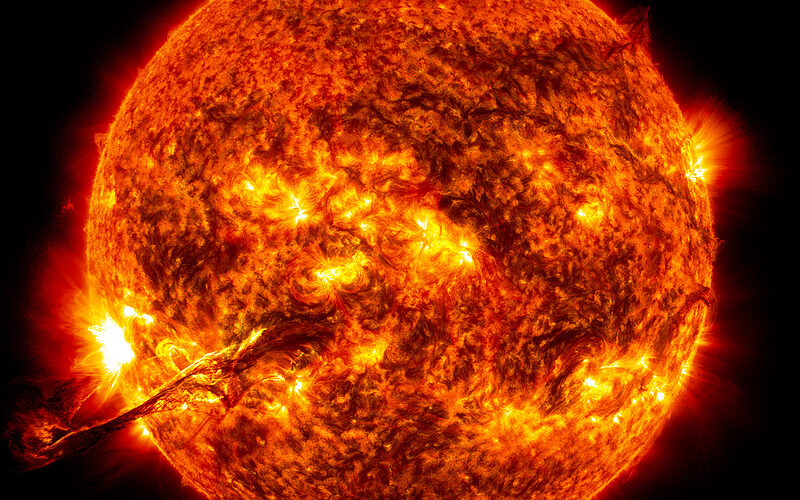The Glaring Menace of Future Solar Eruptions

It seems that electrical technology permeates almost every aspect of our lives. Whole countries are now dependent on electricity for heating, food, and water to name a few. While electrical outages usually only affect localised areas due to terrestrial threats, the light bulb’s competitor – the sun – has the ability to unleash global damage to our electrical infrastructure. The sun may seem like an unlikely torment, but its erratic nature causes scientists to this day to flounder at attempts to predict the whims of our fiery behemoth.
A spectacular light show bathed two-thirds of the world between 1st and 2nd of September 1859, as Aurorae spanned as far south as Cuba in the northern hemisphere1. The event – the greatest solar storm during recorded history – was dubbed as the Carrington event after the British astronomer Richard Carrington, who first observed the link between an earlier solar flare and the ongoing geomagnetic storm. At the time the storm disrupted compasses and the telegram system, but the damage was minimal compared to what would happen if it struck today.
These storms usually come in three stages, but it’s the last stage, the Coronal Mass Ejection (CME) that delivers a solar punch to our electrical systems. The CME is a huge eruption on the surface of the sun that releases large parts of the sun’s corona (the upper atmosphere mostly made of plasma). The CME reaches Earth as a slowly moving cloud – often taking a day or so to reach earth – filled with charged particles that disrupt Earth’s magnetic field, causing powerful Electromagnetic fluctuations2.
The denizens of Earth can’t be directly harmed by a Carrington-class CME, but for electronics or any large conductor it causes chaos: the surging of large additional currents through wiring can cause system overload, with pylons throwing sparks, and large transformers going offline. If a CME affected many transformers at once it could bring down whole national grids for months, which would be catastrophic for our technology-reliant society.
The US and the UK have both invested in research into how to mitigate the effects of a geomagnetic storm of the same calibre as the Carrington event; Lloyd’s of London have estimated that the repair costs would be between $0.6-2.6 trillion3. The frequency of these events is reckoned to be around once every 150 years, and since the last Carrington event was 156 years ago, the stakes are raised for society4.
Our deeply limited knowledge of the workings of the sun has motivated the European Space Agency to launch their Solar Orbiter in 2018, which promises to probe into the mystifying magnetism of the sun; in turn they hope this will be a vital step towards greater geomagnetic storm prediction5. Advanced prediction methods can guarantee that Earth will be better prepared for such events: for example, temporarily turning off transformers prior to the CME impact. In essence, technology seems to be our salvation to our dependency on technology.
Edited by Sarah Spence
References
- Basic information on the Carrington Event https://en.wikipedia.org/wiki/Solar_storm_of_1859
- Description of the CME http://news.nationalgeographic.com/news/2011/03/110302-solar-flares-sun-storms-earth-danger-carrington-event-science/
- Estimation of the damage http://www.independent.co.uk/news/science/solar-storm-scientists-prepare-for-geomagnetic-event-that-could-destroy-technology-across-the-world-a6974421.html
- There was a Carrington-class CME that narrowly missed the Earth in 2012. For more information read this article http://science.nasa.gov/science-news/science-at-nasa/2014/02may_superstorm/
- Information on the Solar Orbiter https://www.theguardian.com/science/across-the-universe/2015/mar/14/esas-solar-orbiter-mission-crucial-milestone










